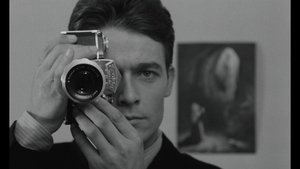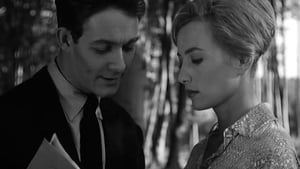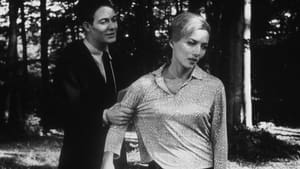Contact: [email protected]
Video Sources 0 Views

Synopsis
[ez-toc]




Introduction
In the captivating realm of cinema, where each frame tells a story, there’s a unique allure to old movies. They are not just films; they are time capsules, preserving the essence of a bygone era. One such cinematic treasure that has recently been unearthed and revitalized is Claude Chabrol’s “The Third Lover Colorized,” a 1962 European crime drama. The film, a part of Chabrol’s early works, has gained newfound attention through a controversial yet intriguing process – colorization.
Read Media File Transfer Agreement: Terms and Conditions
Read FAQ
The Third Lover Colorized: A Cinematic Odyssey
Directed by the acclaimed French filmmaker Claude Chabrol, “The Third Lover Colorized” occupies a special place in the realm of European cinema. Released in 1962, the film is a testament to Chabrol’s unique style and narrative prowess during his formative years. Known for his exploration of psychological depth and complex characters, Chabrol’s early works, including “The Third Lover,” laid the foundation for his later success in the crime drama genre.
The movie follows the story of a man named Alain, played by Jacques Charrier, who becomes entangled in a web of obsession, betrayal, and identity crises. Set against the backdrop of 1960s Europe, the film offers a gripping narrative that keeps viewers on the edge of their seats. Chabrol’s deft direction and storytelling finesse contribute to the film’s enduring appeal.
Colorization as a Controversial Art: Revitalizing Old Movies
In an era where black and white films are considered vintage masterpieces, the concept of colorization has been a subject of debate. The process involves adding color to monochromatic films, breathing new life into classics and introducing them to modern audiences. While purists argue that colorization compromises the authenticity of the original work, proponents view it as a way to make old movies more accessible and relatable to contemporary viewers.
The history of film colorization dates back to the 1980s, with technology continually evolving to achieve more authentic and aesthetically pleasing results. The practice has its benefits, such as introducing younger audiences to timeless classics and revitalizing films for a new generation. However, the drawbacks include the potential loss of the director’s intended vision and the risk of altering the emotional impact of iconic scenes.
Bringing The Third Lover Colorized to Life in Vibrant Hues
“The Third Lover Colorized” underwent a meticulous colorization and remastering process to present Chabrol’s vision in vibrant hues. The decision to undertake such a project was not without its challenges, as the team aimed to balance the preservation of the film’s integrity with the enhancement of visual elements.
The colorization of “The Third Lover Colorized” not only respects the director’s original vision but also adds a layer of depth to the narrative. The use of color enhances key scenes, bringing out subtle details and intensifying the emotional impact of the characters’ experiences. From the evocative use of shadows to the vivid portrayal of 1960s aesthetics, the colorization process immerses viewers in the world Chabrol envisioned.
To illustrate this transformative journey, one can compare select frames from the original black and white version to their colorized counterparts. The shift from the stark contrasts of monochrome to the rich palette of colors demonstrates the careful consideration given to every visual element. The result is a cinematic experience that pays homage to the past while embracing the possibilities of the present.
The Third Lover Colorized: Plot Summary, Themes, and Cinematic Achievements
To delve into the heart of “The Third Lover Colorized,” one must navigate through its intricate plot, rich thematic tapestry, and notable cinematic achievements. Without revealing major spoilers, let’s explore the essence of Chabrol’s masterpiece.
The story revolves around Alain, a character whose life takes unexpected turns as he becomes entangled with a mysterious woman. Themes of obsession, betrayal, and identity permeate the narrative, providing a psychological depth that is characteristic of Chabrol’s works. The film’s cinematography, marked by striking compositions and innovative camera techniques, adds to the overall atmosphere, creating a visual feast for cinephiles.
The colorization process not only breathes new life into the visual elements but also accentuates the thematic nuances. The use of color in key scenes serves as a visual cue, guiding the audience through the complex emotions and moral ambiguities explored in the story. As viewers journey through the labyrinth of Alain’s experiences, they are treated to a symphony of colors that enrich the narrative without overshadowing its core essence.
The Performances that Captivate: Character Study in The Third Lover Colorized
At the heart of “The Third Lover Colorized” are the compelling performances of its lead actors – Jacques Charrier, Walter Reyer, and Stéphane Audran. Their nuanced portrayals bring the characters to life, adding layers of complexity to the narrative.
Jacques Charrier, in the role of Alain, delivers a captivating performance that captures the internal turmoil of his character. As Alain navigates the intricate web of love, desire, and betrayal, Charrier’s portrayal skillfully conveys the emotional depth required for such a complex role. Walter Reyer and Stéphane Audran complement the ensemble with performances that heighten the tension and intrigue, contributing to the overall cinematic experience.
The colorization process not only revitalizes the visual elements of the film but also highlights the subtleties in the actors’ performances. The nuances of facial expressions, the interplay of emotions, and the chemistry between characters become more pronounced with the addition of color. The result is a renewed appreciation for the talent that brought Chabrol’s characters to life more than six decades ago.
Legacy and Influence: The Third Lover’s Enduring Impact on Cinema
“The Third Lover Colorized” may have been released in 1962, but its legacy continues to resonate in the world of cinema. The film, once relegated to the annals of classic cinema, has found renewed relevance through its colorized re-release.
The initial reception of “The Third Lover Colorized” was mixed, with critics and audiences grappling with the film’s intricate narrative and unconventional storytelling. However, as time passed, the film’s unique charm and Chabrol’s distinctive style garnered appreciation from cinephiles and scholars alike. The colorized version offers a fresh perspective, allowing audiences to reassess the film’s impact and significance in the context of modern cinema.
Chabrol’s legacy as a pioneer in the crime drama genre is further solidified by “The Third Lover.” Filmmakers working in similar thematic territories continue to draw inspiration from Chabrol’s ability to delve into the complexities of human nature. The film’s enduring influence serves as a testament to its timeless appeal, now presented in a new light through the lens of color remastering.
Where to Watch The Third Lover Colorized Version?
For those eager to embark on this cinematic journey, experiencing “The Third Lover” in its colorized version is a must. Fortunately, the film is now available on various streaming platforms and Blu-ray releases, ensuring that audiences worldwide can witness the marriage of Chabrol’s brilliance and the vibrant hues that bring his vision to life.
Whether you are a seasoned cinephile or a newcomer to the world of classic cinema, “The Third Lover” in colorized form offers a unique opportunity to appreciate the convergence of past and present. As the film continues to captivate audiences, its legacy as a 1960s European crime drama in color remains a testament to the enduring power of cinematic storytelling.













